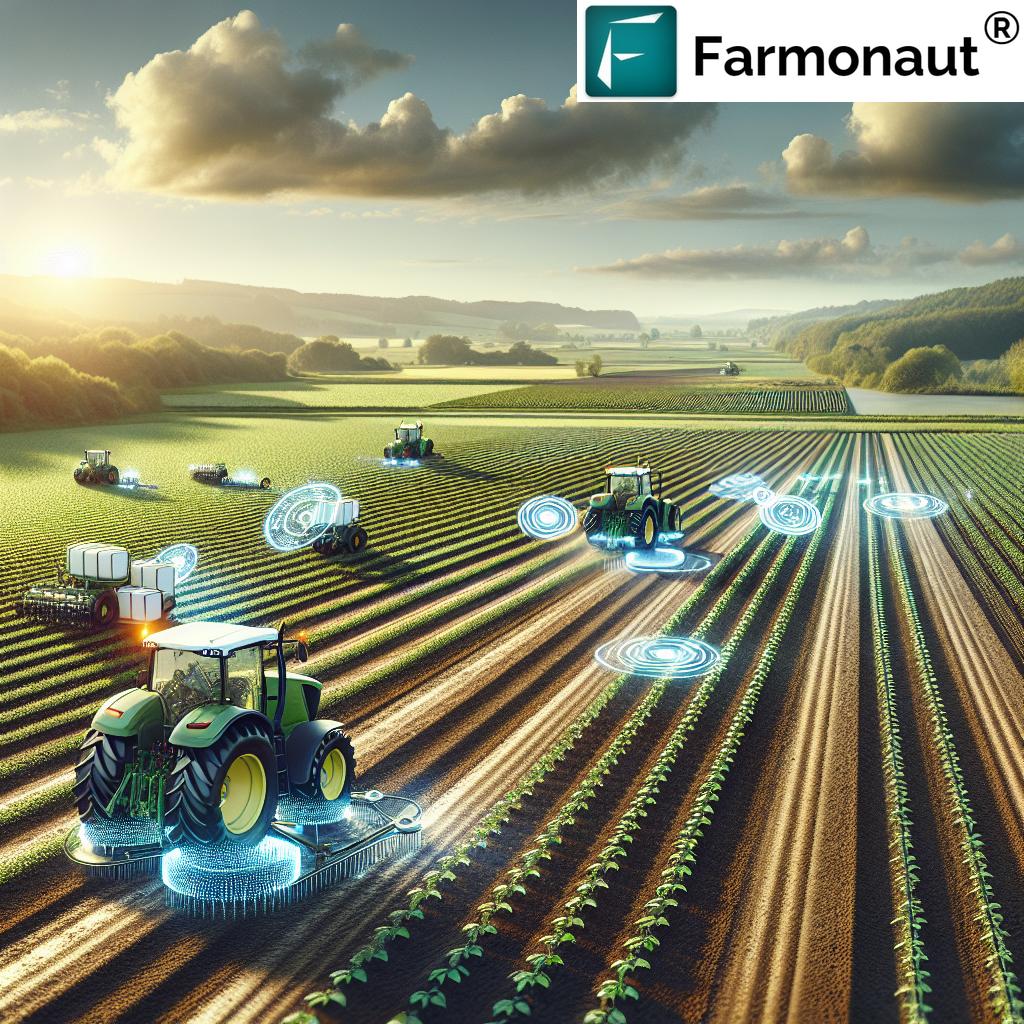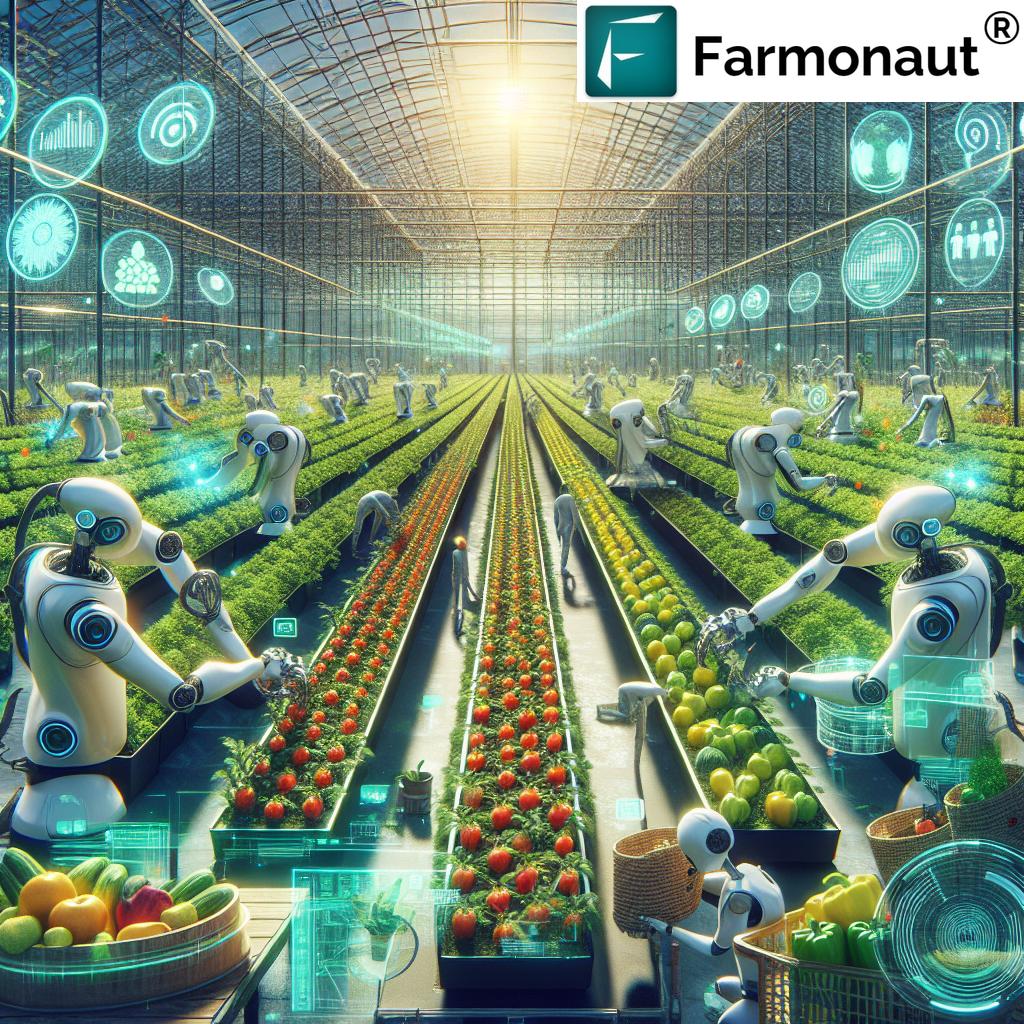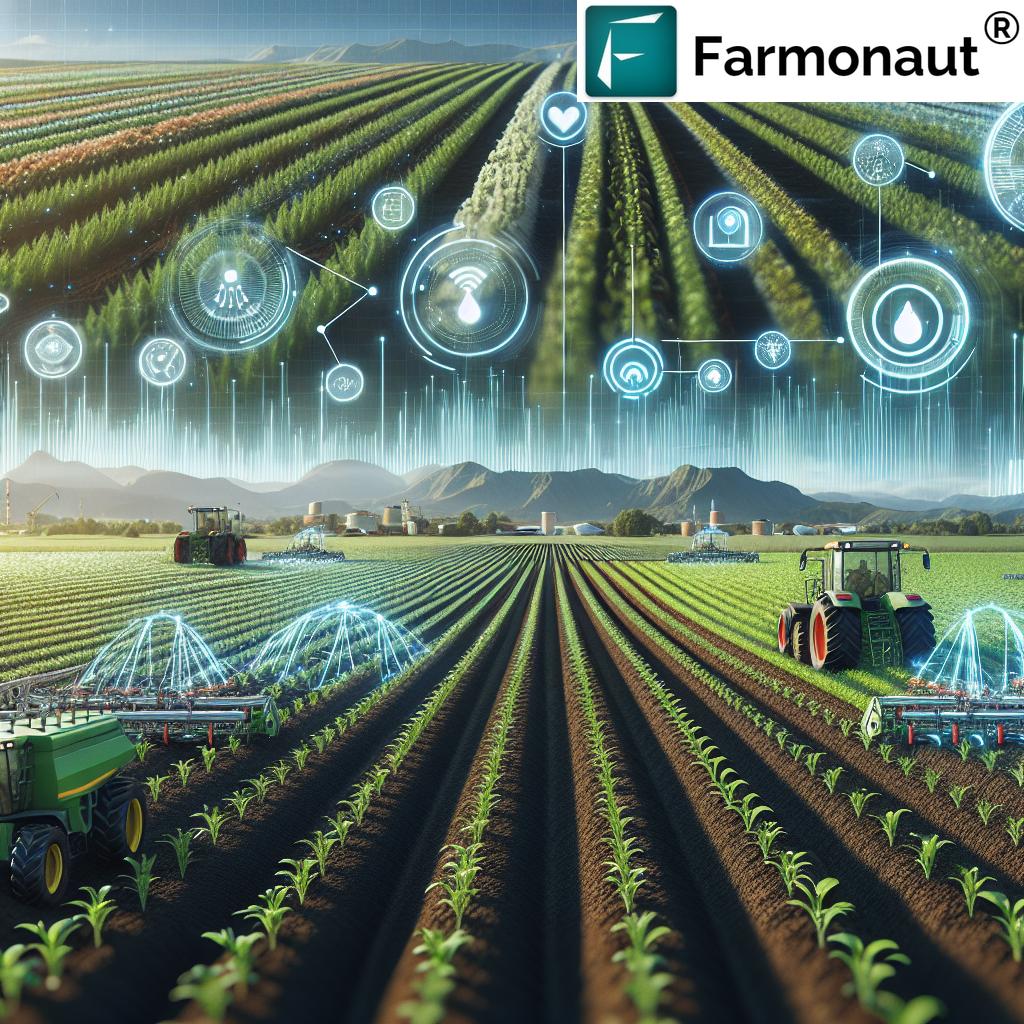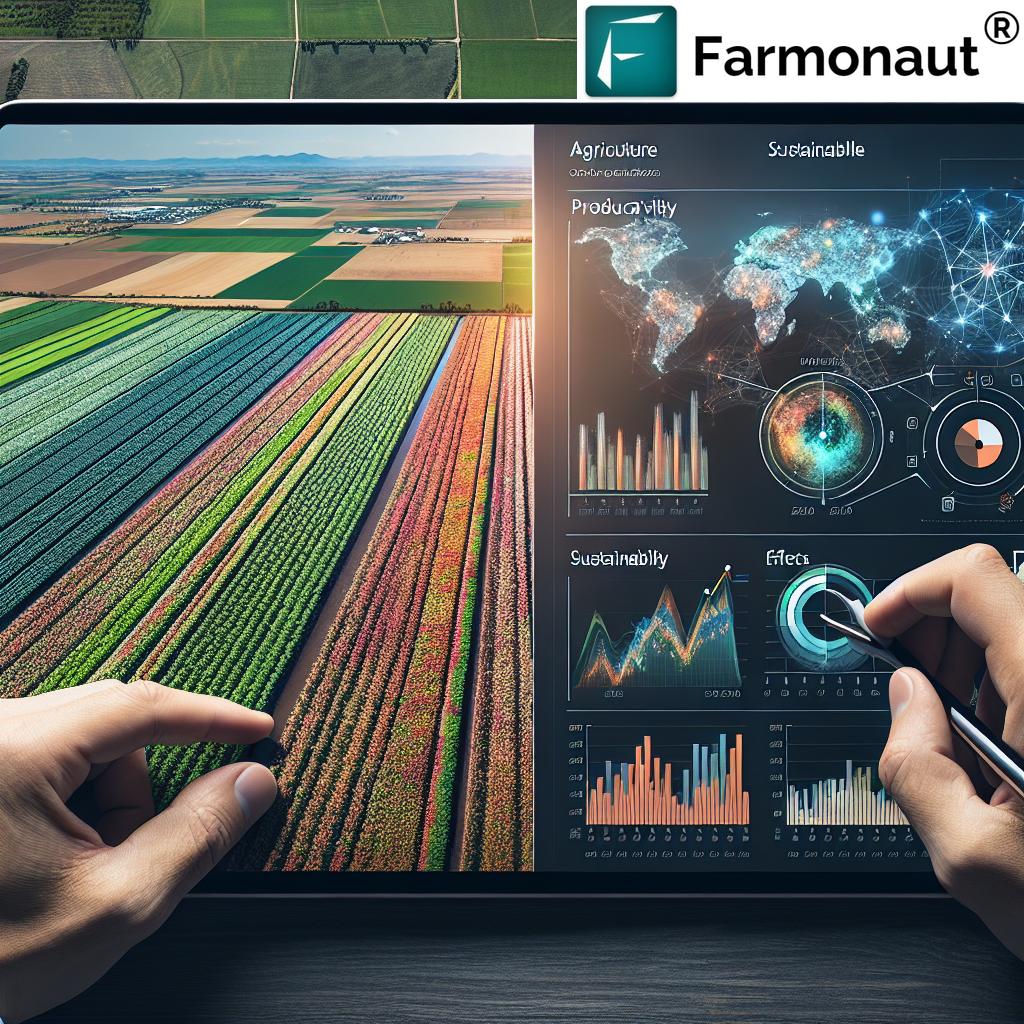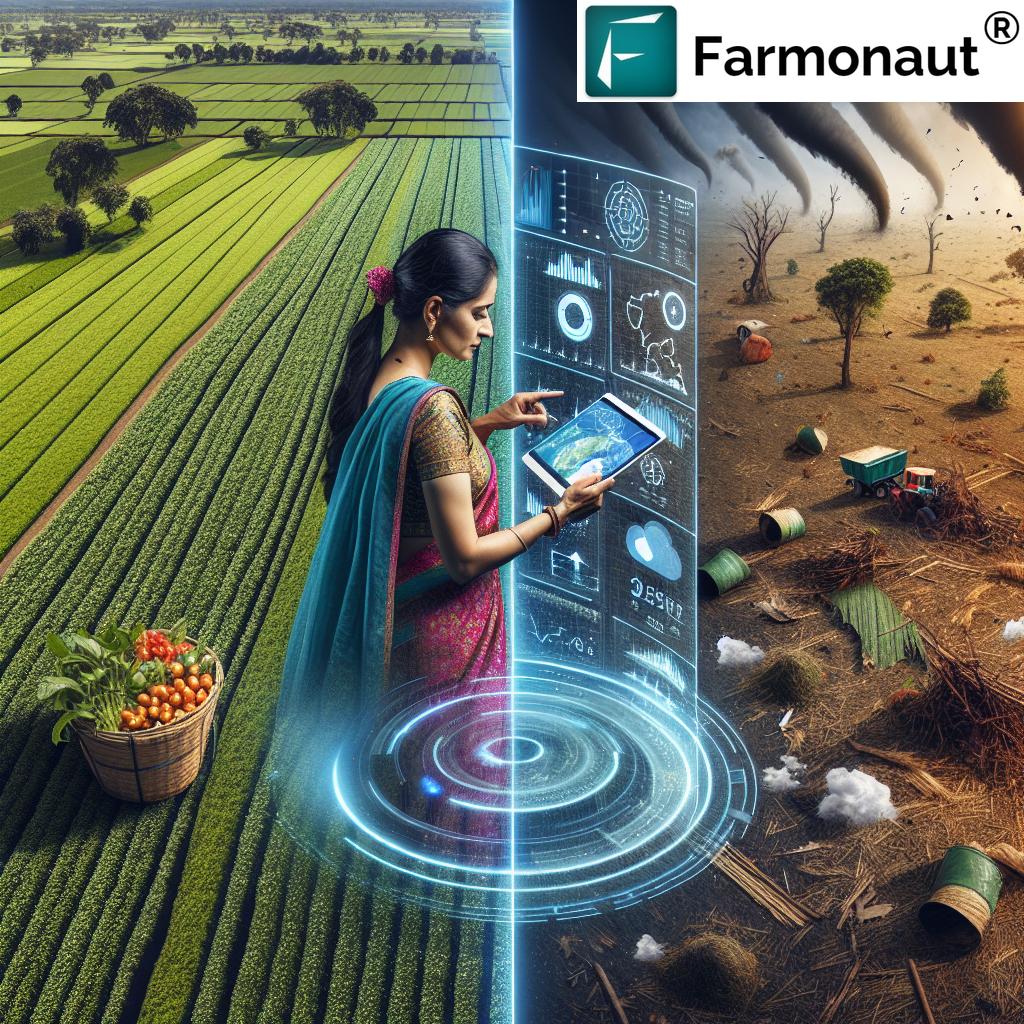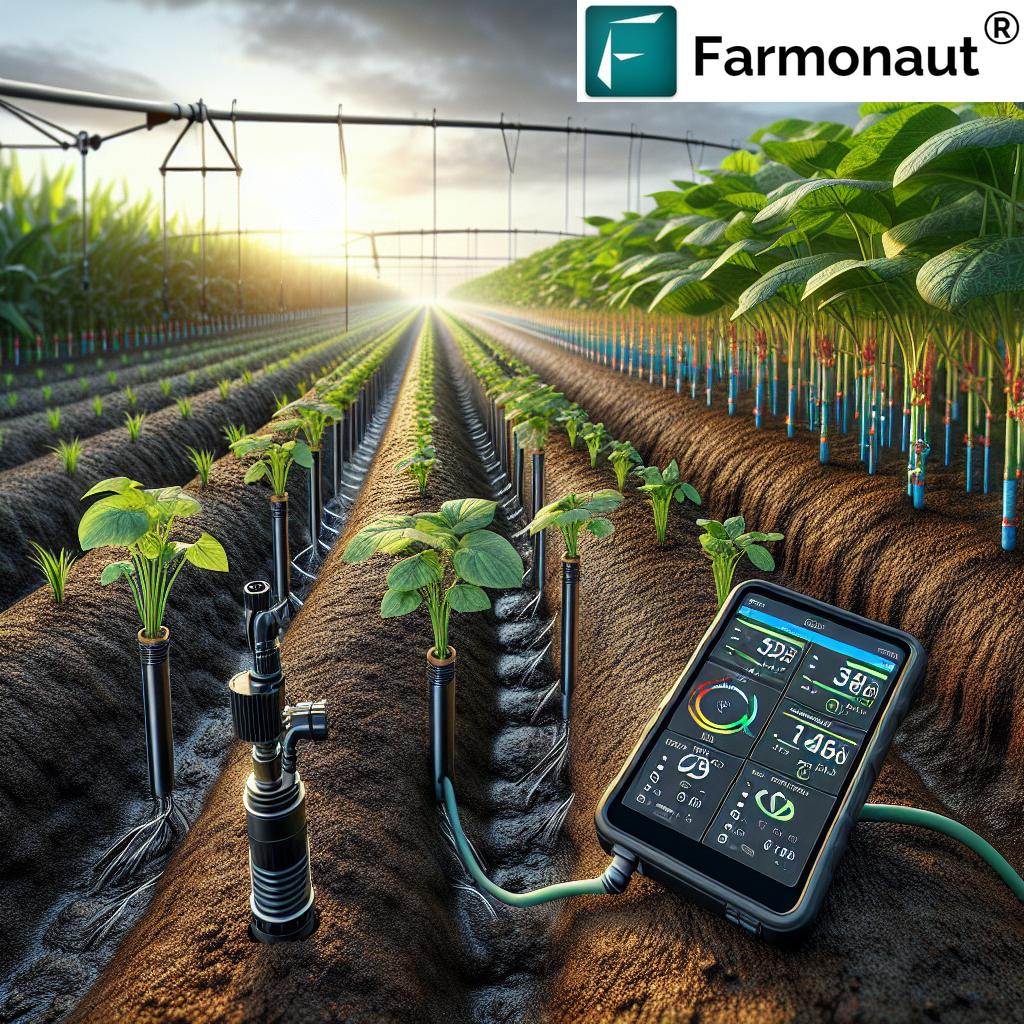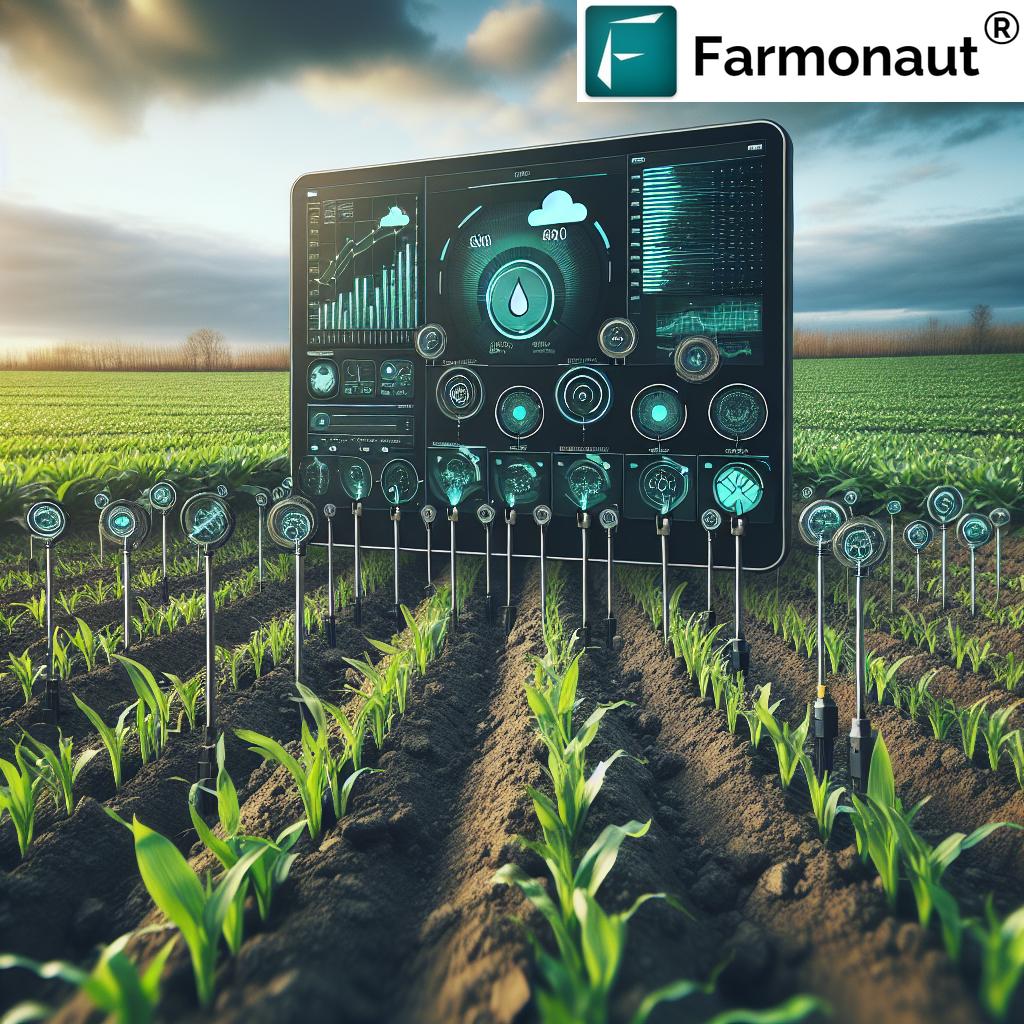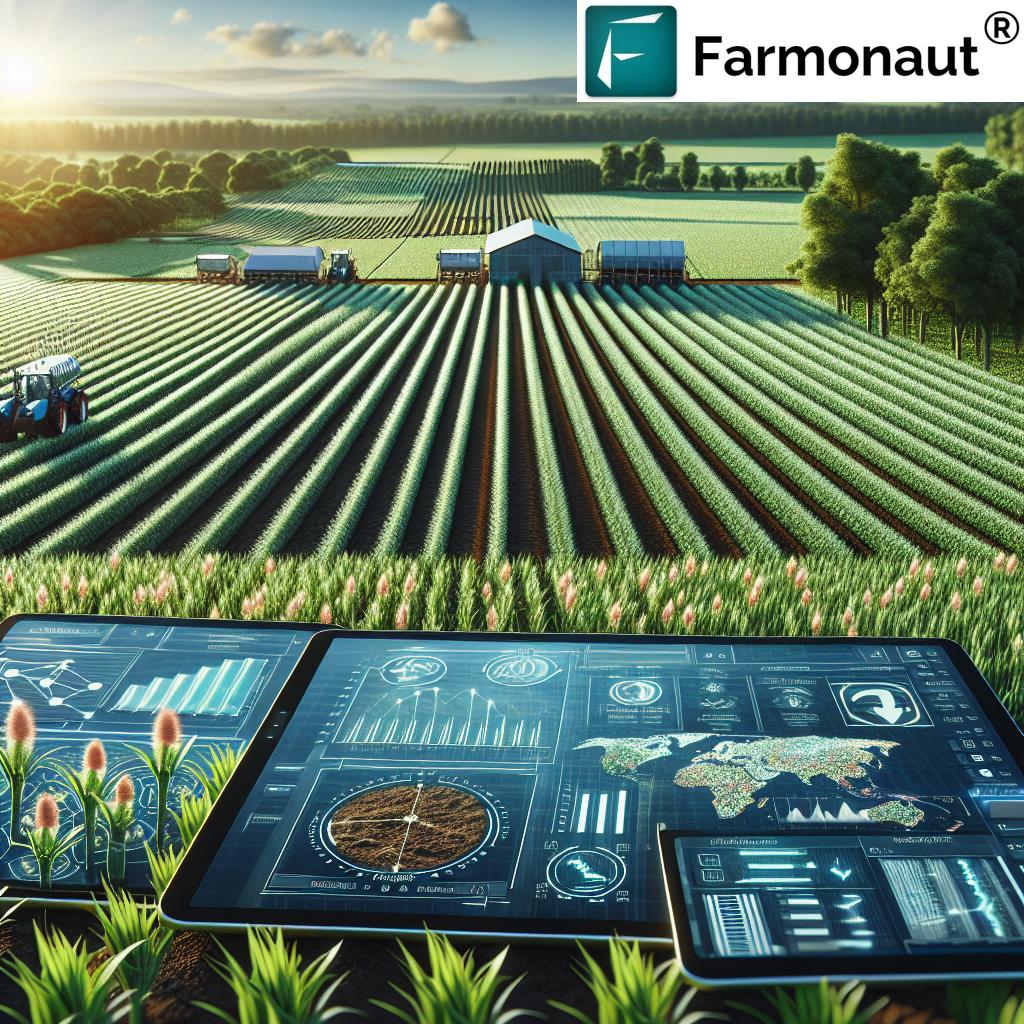7 Smart Agriculture Machines Revolutionizing Farming Now
Farming is undergoing a radical transformation, propelling us into an era where machines can think, sense, and act. Smart agriculture is at the heart of this evolution, harnessing AI, IoT, robotics, and advanced data analytics to solve some of the toughest challenges faced by traditional agriculture. In this blog, we’ll explore 7 cutting-edge precision farming equipment that are optimizing resource use, improving farm efficiency, and redefining sustainability for farmers worldwide.
These innovations go far beyond eliminating manual labor—they introduce a whole new level of precision and insight into crop management, resource allocation, and ecological balance. As crop yields rise and waste declines, we’re witnessing the start of a new agricultural revolution fueled by data-driven solutions.
The Evolution of Smart Agriculture
Smart agriculture, also referred to as data-driven or precision farming, has emerged from the urgent need to address global food demand, labor shortages, limited resources, and environmental challenges. Historically, traditional methods often meant blanket application of water and fertilizers, leading to inefficiencies, resource wastage, and inconsistent yields.
The concept of smart agriculture proposes a fundamental shift: Instead of generalized agricultural practices, we now have access to systems that collect, analyze, and act on real-time data. Farmers can make informed decisions regarding when to irrigate, fertilize, or intervene for disease control, thereby optimizing inputs and improving crop health.
This evolution is driven by the integration of various advanced technologies—especially artificial intelligence, the Internet of Things (IoT), robotics, automation, and big data analytics. These technologies empower the agricultural sector by turning fields and equipment into interconnected, intelligent networks.
Key Components of Smart Agriculture Machines
To comprehend the immense potential of smart agriculture, let us delve into its core components—each playing a pivotal role in making the promise of technology-driven farming a reality:
- Artificial Intelligence & Machine Learning
- Robotics & Automation
- Drones & Remote Sensing
- IoT & Sensor Technology
- Autonomous Vehicles & Machinery
7 Smart Agriculture Machines Revolutionizing Farming Now
Let us examine the seven most impactful smart agriculture machines that are revolutionizing farming through the integration of artificial intelligence, IoT, advanced robotics, data analytics, and automation. These machines demonstrate the real-world potential of moving from traditional to data-driven agriculture.
- AI-Powered Crop Management and Decision Support Systems
Overview:
These systems utilize AI and machine learning to analyze massive amounts of agricultural data collected from various sources—such as sensors, drones, and satellites. They provide actionable insights for farmers to optimize yields, predict diseases, and recommend optimal harvest times.
Key Benefits:
- Predictive analytics forecast crop health and yield for efficient planning
- Computer vision distinguishes crops from weeds
- Targeted application of herbicides and fertilizers, reducing conventional chemical usage by 70–80% (Blue River Technology’s See & Spray)
- Automated record-keeping and data management for regulatory compliance
For instance, artificial intelligence in agriculture enables hyper-local weather prediction, early disease alerts, and fine-tunes irrigation scheduling, maximizing productivity and resource use.
- Robotic Harvesters and Automated Field Equipment
Overview:
Robotic harvesters are redefining manual-intensive tasks like picking fruits and vegetables. With advanced computer vision and automation technologies, these machines can identify, select, and harvest crops with speed and precision—operating tirelessly day and night.
Key Benefits:
- Enables precision harvesting of delicate or labor-intensive crops (berries, lettuce, tomatoes)
- Reduces labor shortages and costs, compensating for declining rural workforce
- Minimizes crop damage by picking only ripe produce
- Improves efficiency, with some AI-powered equipment boosting yield by up to 20%
- Example: Advanced robotics from companies like FarmWise mechanically remove weeds, reducing chemical use and reliance on manual labor
Explore Farmonaut’s Fleet Management Tools for efficient tracking and operation of harvest machinery, reducing operational costs and optimizing resource deployment on large farms.
- Drones and Remote Sensing for Crop Monitoring
Overview:
Drones for crop monitoring equipped with multispectral cameras quickly collect high-resolution images of fields, offering detailed maps of plant health, detecting nutritional deficiencies, irrigation issues, and early signs of disease and pests.
Key Benefits:
- Real-time aerial surveys covering large and hard-to-reach areas swiftly
- Remote sensing enables precise estimation of crop vigor and soil variability
- Detects issues before they become widespread, minimizing crop loss
- Supports data-driven agriculture, fine-tuning water, fertilizer, and pesticide application
- Example: AGCO’s Fendt Xaver system using robot swarms to plant seeds with unprecedented accuracy
Learn about Farmonaut’s Crop & Plantation Forest Advisory solutions leveraging satellite and drone data for even broader and real-time field monitoring.
- IoT and In-Field Sensor Networks
Overview:
The IoT in farming—the vast network of connected sensors—monitors critical metrics like soil moisture, temperature, weather conditions, nutrient presence, and livestock health. IoT-based sensors send real-time data to cloud platforms, triggering automated or advised actions.
Key Benefits:
- Continuous monitoring supports precision irrigation and fertilization, cutting waste
- Detects plant stress, water shortages, and disease outbreaks using sophisticated sensing
- Improves decision-making and resource optimization across the field
- Enables remote farm management from any location
Discover Carbon Footprinting Tools from Farmonaut, which track emissions impact and foster sustainable farming practices with real-time sensor data on fuel, fertilizer, and equipment use.
- Smart Irrigation and Water Management Systems
Overview:
Smart irrigation systems use AI-driven analytics and sensor-derived soil moisture data to deliver water precisely where and when crops need it. These automated systems significantly lower water consumption and boost resource efficiency.
Key Benefits:
- 30% water savings on average by avoiding over-irrigation
- Customizable scheduling for fields with varying soil types and crop requirements
- Automated operations based on weather forecasts and soil moisture trends
- Reduced environmental impact and input costs
For full integration, manage your irrigation and resource allocation via web or mobile with Farmonaut’s dedicated platform for large-scale farms, available on Android, iOS, and browser app.
- Autonomous Tractors, Harvesters, and Farm Machinery
Overview:
Autonomous farm machinery includes driverless tractors, combine harvesters, and sprayers that operate using AI and GPS guidance, automating everything from soil preparation and planting to crop treatment and harvesting.
Key Benefits:
- 24/7 operation increases field productivity and shortens time to harvest
- Reduces dependency on manual labor and improves safety in hazardous conditions
- Maintains precise application of seeds, fertilizer, and pesticides
- Compatible with fleet management and automated scheduling for optimized resource deployment
Automate farm machinery control and monitor fleets using Farmonaut’s tools for efficient logistics, improved safety, and reduced costs.
- Blockchain-Based Product Traceability and Farm Data Security
Overview:
Blockchain secures every transaction and logs every input or output from a farm, ensuring a verifiable, tamper-resistant record of product journey and field activities. This smart technology is critical for quality assurance, export regulations, and transparent supply chains in modern agriculture.
Key Benefits:
- Enhances traceability from seed to shelf, building consumer trust and market value
- Enforces compliance with food safety and sustainability protocols
- Protects farm data and privacy, reducing fraud and errors
- Drives brand reputation for corporates and contract farmers in global food and textile industries
Explore Farmonaut’s Blockchain-Based Traceability Solutions for transparent, secure, and value-added agricultural supply chains.
Comparison Table: 7 Smart Agriculture Machines
| Machine Name | Core Technology | Primary Function | Estimated Yield Improvement (%) | Resource Efficiency (% Savings) | Unique Feature |
|---|---|---|---|---|---|
| AI-Powered Crop Management Systems | AI, Machine Learning, IoT | Data-based forecasting, disease detection, decision support | 10–20 | Up to 30 (on inputs) | Real-time predictive analytics for crop health |
| Robotic Harvesters | Robotics, Computer Vision | Automated harvesting of fruits & vegetables | 15–20 | Up to 25 (on labor) | Nonstop 24/7 precision harvesting |
| Drones & Remote Sensing | AI, IoT, Multispectral Imaging | Field mapping, plant health monitoring, scouting | 10–15 | 10–20 (on water and inputs) | Early detection of stress and disease |
| IoT & Sensor Networks | IoT, Wireless Sensors | Soil, crop, & weather monitoring; automation triggers | 5–12 | Up to 30 (on water and fertilizer) | Granular, field-level data collection |
| Smart Irrigation Systems | AI, IoT, Sensor Tech | Automated precision watering | 8–12 | 30–35 (on water) | Dynamic adjustment via soil & weather data |
| Autonomous Farm Machinery | AI, GPS, Robotics | Plowing, sowing, crop care without human input | 10–15 | 15–25 (on fuel/labor) | Unmanned, round-the-clock operation |
| Blockchain Traceability Systems | Blockchain, Secure Databases | Documenting farm-to-market journey | 1–5 (market value gain) | Up to 30 (reduced fraud/waste) | Full transparency and product authentication |
Benefits of Smart Agriculture Machines
The integration of advanced technology in agriculture provides a comprehensive solution to some of the industry’s biggest challenges:
- Increased Efficiency: Automated systems can perform repetitive tasks swiftly and with accuracy, lowering costs and maximizing time. For example, unmanned combine harvesters by Kubota complete harvests with minimal human intervention.
- Resource Optimization: Precision farming ensures the right amount of water, fertilizer, and pesticide is used—minimizing waste and reducing environmental footprint. Smart irrigation alone can offer up to 30% resource savings.
- Enhanced Crop Monitoring: Sensors, drones, and AI software catch problems early, improving yields and reducing crop loss due to disease or stress.
- Labor Savings: Automation solutions address the growing labor shortages while enabling human workers to shift to more skilled management roles.
- Environmental Sustainability: Smart technology reduces the overuse of chemicals and water, preserving ecosystems and supporting sustainable farming practices.
Farmonaut: Enabling Data-Driven Smart Agriculture
When it comes to democratizing smart agriculture for everyone—from individual farmers to major agribusinesses and government agencies—Farmonaut stands at the forefront. Our platform makes precision agriculture both affordable and accessible, allowing growers worldwide to easily access satellite data, real-time crop health monitoring, AI decision support, blockchain-based traceability, and powerful resource management tools.
- Satellite-based Crop Health Monitoring: We use multispectral imagery to assess vegetation health (NDVI), soil moisture levels, and more—helping you optimize inputs by knowing exactly when, where, and how much to irrigate, fertilize, or treat for pests.
- Jeevn AI Advisory System: Our AI-driven platform analyzes multiple data streams and provides you with personalized, actionable insights—improving crop productivity and decision-making.
- Blockchain-Based Traceability: By integrating blockchain solutions into farm management, Farmonaut enables farm-to-market transparency, reducing supply chain fraud.
- Fleet & Resource Management: Our mobile-friendly solutions help large-scale farmers and agribusinesses monitor and control machinery, vehicles, and field teams for greater productivity.
- Carbon Footprinting: Our platform helps you track, analyze, and reduce your environmental impact in real time for more sustainable farming.
- Flexible Subscription Model: Accessible via browser, Android, iOS apps, and API, our affordable plans are designed for both smallholder and large operations.
- API & Web Integration: Seamlessly integrate with your existing systems through our powerful API or explore our API Developer Docs for custom solutions.
Challenges and Considerations
As smart agriculture machines reshape farming globally, certain hurdles must be considered:
- High Initial Investment: Advanced systems can carry steep upfront costs, especially for small-scale farmers.
- Technical Complexity: Learning to operate and maintain these machines often requires specialized skillsets and ongoing training.
- Data Security and Privacy: With extensive data collection comes the need for robust security measures and privacy protections.
- Impact on Rural Labor: While automation addresses labor shortages, it may also shift the nature of employment in rural areas.
- System Integration: Not all farms can seamlessly integrate modern solutions with traditional methods—interoperability is crucial.
The Future Outlook of Smart Agriculture Machines
We are only at the beginning of the agriculture revolution. With countries like China initiating nationwide digitization plans and rapid development in AI, IoT, and analytics, smart machines will become even more accessible and cost-effective. We foresee:
- Greater Adoption: As costs decrease and ease of use improves, data-driven agriculture will be a global standard, not a luxury.
- Integrated Platforms: Smart machines will communicate in real-time, further reducing inefficiencies and wastage.
- Rise of Sustainability: Features like carbon footprint tracking offered by Farmonaut will help farmers meet regulatory and market sustainability demands.
- Enhanced Transparency: Blockchain-driven traceability will dominate supply chains, especially for export-oriented, certified, and organic markets.
- Policy Support: More governments are likely to subsidize the adoption of precision farming equipment and smart technologies for sustainable outcomes.
Frequently Asked Questions: Smart Agriculture Machines
1. What is smart agriculture, and how does it differ from traditional farming?
Smart agriculture leverages technology such as AI, IoT, drones, and advanced data analytics to enable informed, precise, and automated farm operations. Unlike traditional farming, which relies heavily on manual labor and generalized practices, smart agriculture optimizes every input—reducing waste, effort, and environmental impact.
2. Which technologies are driving the revolution in smart agriculture?
The leading technologies include artificial intelligence, machine learning, robotics, drones, IoT sensors, blockchain, and big data analytics—each contributing distinct advantages for monitoring, analyzing, and automating agricultural processes.
3. How do smart machines benefit smallholder and large-scale farmers?
Smallholders: Access affordable, satellite-powered systems for real-time crop and soil insights.
Large-scale farms: Automate machinery, monitor vast acreage efficiently, and optimize resources via integrated analytics for yields and cost-savings.
4. Can smart agriculture machines help with environmental sustainability?
Absolutely! Features like smart irrigation, targeted spraying, and carbon footprinting minimize resource use, track emissions, and promote soil and ecosystem health. Discover more at Farmonaut’s Carbon Footprinting page.
5. How can I get started with precision agriculture if I’m new to these technologies?
Farmonaut’s platform offers intuitive apps and step-by-step onboarding for both new and experienced users. Beginners should start with satellite-based crop health monitoring and gradually add modules for resource management, fleet optimization, and more.
Try the Farmonaut App to access satellite insights on web, Android, or iOS.
6. Are Farmonaut services available globally?
Yes. Farmonaut’s solutions are designed for global accessibility, supporting multiple crops, climates, and regional needs.
7. Can I integrate Farmonaut’s technology into my own agri software?
Absolutely. You can access Farmonaut’s API and browse the Developer Docs for custom integrations, enabling you to enrich your platforms with high-definition agricultural data and analytics.
Conclusion
The advent of smart agriculture machines represents a seismic shift towards data-rich, sustainable farming practices. As precision farming equipment powered by AI, IoT, analytics, and automation becomes widely adopted, we are poised to solve the acute challenges of modern agriculture: resource depletion, labor shortages, crop loss, and the pressing need for sustainability.
By leveraging platforms like Farmonaut, the future of farming is accessible, efficient, and environmentally accountable. Our commitment is to continue bringing innovations that empower every stakeholder in the agricultural sector—be it smallholder or enterprise, public or private—towards improved yields, reduced impact, and lasting food security for all.
Ready to step into the future of smart farming? Start with Farmonaut — The precision farming platform transforming agriculture, one smart decision at a time.


